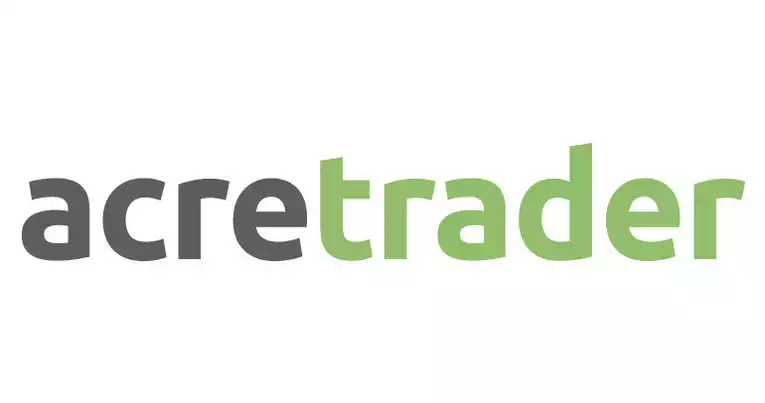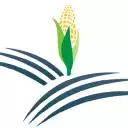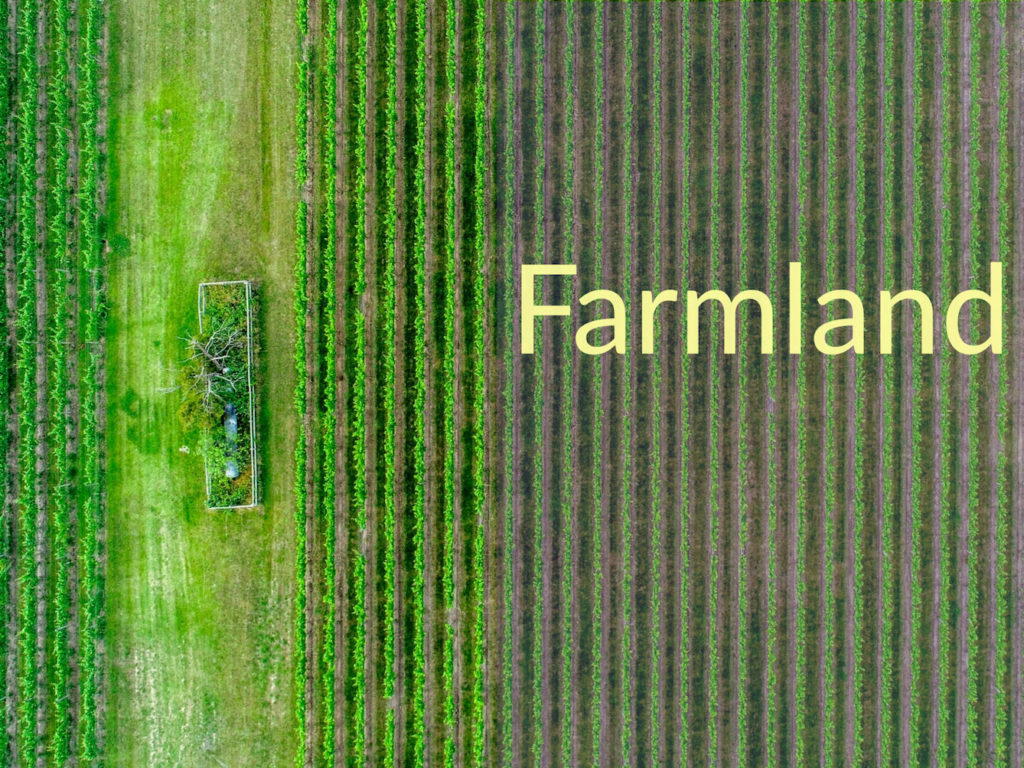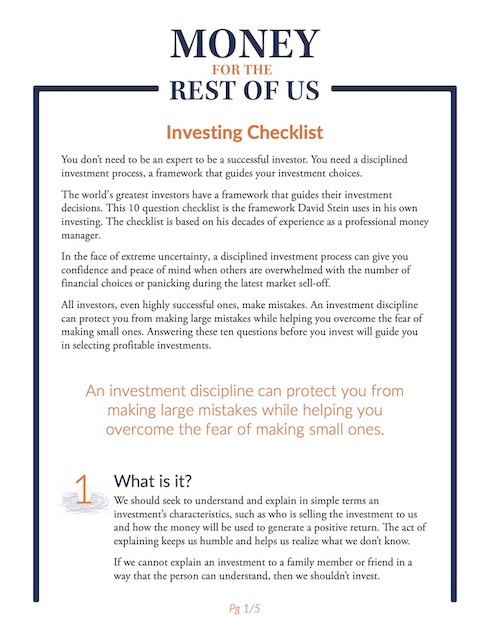What you need to know about the risks, returns, and ways to invest in farmland.
Farmland is popping up everywhere as a lower-risk opportunity that has outpaced inflation and offers the potential for double-digit returns. But is investing in farmland actually a wise move?
We’re going to explore farmland investing—what’s actually driving the returns and what you need to know as an investor.
Three Ways To Invest in Farmland
In 2021, David sold a 40-acre parcel of land in Teton Valley, Idaho. Exquisite views, workable farmland, and unbeatable location made it a valuable investment. He earned over 10% annualized for his 10-year holding period. In this case, most of the value was due to the mountain views, not the income from the crops. David owned the farmland directly, which is one of three ways to invest in farmland.
The three ways to invest in farmland are:
- Buy & sell farmland yourself
- Farmland investing platforms
- Farmland real estate investment trusts
What Drives Farmland Returns
Buying farmland, waiting for the value to appreciate, and then selling it is the most basic form of farmland investing.
It’s simple: land values rise, and the land produces crops, which provides you with income. The higher the income, the more valuable the farmland. In addition, the land could appreciate due to its beauty or location for a vacation property. That is what contributed to David’s return on his farmland investment.
Farming income is affected by two factors:
- Commodity prices: the higher the price for agricultural commodities, the greater the income.
- Interest rates: the lower the rate, the less farmers pay on loans to buy land and equipment.
When commodity prices rise, farmers earn more because they can sell their harvest at higher prices. Commodity prices for agriculture, energy, and metals often move together in what are known as super-cyles.
A little on commodity super-cycles:
- They can last over 10-years.
- Long-term commodities tend to rise and fall together.
- They are influenced on a global scale (China’s demand for metal and energy, for example).
- They are driven by population growth (which is slowing).
- They are influenced by new developments and technological advances.
Commodity prices last peaked in 2008 and hit bottom in 2020, a 12-year commodities bear market. Commodities have been rising since 2020 driven by strong demand and supply shortages arising from the economic reopening from Covid-19 and Russia’s invasion of Ukraine. Higher commodity prices have led to higher returns for farmland investing in the last two years because harvest income and land prices have increased.
We aren’t sure if a new commodity bull supercycle has begun as there are different forces impacting commodity prices. The energy transition to renewables and electric vehicles is driving demand for some metals, but slowing population growth and greater productivity can weaken demand, especially for energy and agriculture commodities.
It’s hard to know what’s going to happen.
The value of farmland, though, is tied to agriculture as a commodity. We just don’t know what the future holds in regard to the supply & demand of agriculture.
Agriculture demand comes from three areas:
- People that eat food (everyone).
- Livestock
- Biofuel (and its use is decreasing).
Ultimately, for the value of farmland to continue rising, there needs to be greater demand for farmland. Let’s take a look at why we might not see this happen.
Bumper Crops = Bumper Production
Since 1900, agricultural commodities prices have been negative after adjusting for inflation. Why?
Farmers are becoming more and more efficient. They don’t need more land, because they are getting more out of what they already have. The rise in synthetic fertilizers, such as urea, has led to an unprecedented jump in harvested yields for each acre planted. In addition, greater mechanization, superior seed varieties, and better crop management strategies have led to a Green Revolution. U.S. farmers now produce more crops than U.S. households can consume.
So how do U.S. farmers stay afloat?
They export more to other countries.
To keep prices from plummeting, farmers rely on global demand to sustain them. This creates a global playing field among farmers.
So what does this mean for you as an investor?
Less land doesn’t necessarily mean higher crop prices and higher farmland returns. What matters is whether farmers, due to higher production rates, are growing too much food even as farmland acreage shrinks.
Farmland Returns
The most comprehensive benchmark for farmland returns is the NCREIF farmland index. Since 1991, U.S. farmland has returned 10.7% annualized including both income and appreciation.
One caution with that index is when it started in 1991 U.S. cropland was at rock bottom.
In 1980, that average U.S. cropland real estate value per acre—including permanent crops and row crops, but excluding grazing pasture—was $1,800. By 1991 it had fallen to $1,200, so about a 40% decline. Then we had a recovery. By 2006, farmland was selling at $2,300 per acre, and then it peaked in 2014 at about $4,019 per acre. Farmland was flat from 2014 to 2020 during the commodities bear market. But as expected, with commodity prices rising, farm income and land prices have increased. The average price of a U.S. acre of cropland reached a record high of $5,055 in 2022.
For the year ended June 30, 2023, the NCREIF Farmland Index has returned 8.2%. The income component of that return was 3.7%. 4.5% was appreciation of the land. The income component of the NCREIF farmland index has been just under 4% for much of the past decade.
So what kind of return are you looking at if you choose to invest in farmland?
Expected farmland returns really depend on where we are in the commodities cycle and the starting point of land prices. Mid-to-high single digits is a reasonable farmland return expectation with the potential for double-digit returns, depending on the particular parcel, crop, and whether debt was used to magnify the return.
Permanent crops such almonds, pistachios, and wine grapes have generally outperformed annual crops with returns of 9% or more over the past decade.
Farmland Investing Risks
If you want to invest in farmland, how should you go about it? As with any investment, it’s important to understand the risks.
The risk comes in the form of interest rates, weather, platform risk, and producer concentration. Wildfires consume valuable land and crops, although that is rare for row crops and orchards. Interest rates influence farmers’ incomes and production costs. Some production areas are saturated already with either producers or the crop itself.
An example of the latter is the timber industry. There are so many trees that even with the sawmills working at full capacity, it will be years before the supply is equalized with the demand.
Yes, there are risks with every asset. But you need to understand what actually propels the return.
One way to manage farmland investing risk is to rely on professional investment teams to help select and manage farms for you. This can be done by investing through a farmland investing platform, such as AcreTrader or FarmTogether. Or through investing in a farmland real estate investment trust like Gladstone.
Farmland real estate investment trusts are publicly-traded farmland operators whose securities trade on stock exchanges. Farmland REITs are more volatile than an investment on a farmland investment platform because farmland REIT prices change whenever the stock market is open.
The price of investments on farmland investment platforms change more slowly based on the appraisal of the underlying farms. Farmland REITs also conduct appraisals to determine the net asset value per share, which means the market price of a farmland REIT can sell for more or less than the REIT’s net asset value.
As with any investment, you should:
- Know the risks.
- Understand what drives the return.
- Know your investment options, the fees, and the associated risks.
- Have an exit strategy.
In the case of farmland, the exit strategy is pretty simple. You sell the land. But someone has to buy it, and it’s not promised that it will be easy.
If you’re going the crowdfunding platform route, do your research. Read everything. They can’t control the outcome, and no one knows the future.
Don’t expect double-digit returns. Single digits? Sure! Farmland is a good diversifier and can cushion your portfolio against inflation.
You might consider purchasing your own land instead of investing indirectly. Find a beautiful spot that people will value for its own sake. When you’re ready to sell, it doesn’t have to be dependent on what crop it produces and how much people are eating.
Farmland Investment Options
Here are some farmland investment options. The first two are crowdfunding investment platforms. The second two are Farmland REITs. Note: The links below are affiliate links; if you click and make a purchase we may earn a commission at no additional cost to you.
-
 Learn More
Learn MoreExplore the current farmland offerings selected and managed by AcreTrader.
This is a sponsored promotion for the AcreTrader platform. Money for the Rest of Us may have investments in companies represented on the AcreTrader platform. This informational guide is by no means a promotion, solicitation, or recommendation of any specific investment."
-
 Learn More
Learn MoreExplore the current farmland offerings on FarmTogether including their Sustainable Farmland Fund.
This is an affiliate link, if you click and make a purchase we may earn a commission at no additional cost to you.
-
 Learn More
Learn More
This is an affiliate link, if you click and make a purchase we may earn a commission at no additional cost to you.
-
 Learn More
Learn More
This is an affiliate link, if you click and make a purchase we may earn a commission at no additional cost to you.

Emily Boulter is a professional writer with a B.A. in English & Writing from Regent University. With experience in show notes writing, grant writing, and business writing, she has a deep passion for helping others through her writing and non-profit initiatives. Emily lives in the Rocky Mountains of Colorado and can easily be found hiking, horseback riding, or reading in one of the local coffee shops.

David Stein is the founder of Money for the Rest of Us. Since 2014, he has produced and hosted the Money for the Rest of Us investing podcast. The podcast reaches tens of thousands of listeners per episode and has been nominated for ten Plutus Awards and won one. David also leads Money for the Rest of Us Plus, a premium investment education platform that provides professional-grade portfolio tools and training to over 1,000 individual investors. He is the author of Money for the Rest of Us: 10 Questions to Master Successful Investing, which was published by McGraw-Hill. Previously, David spent over a decade as an institutional investment advisor and portfolio manager. He was a managing partner at FEG Investment Advisors, a $15 billion investment advisory firm. At FEG, David served as Chief Investment Strategist and Chief Portfolio Strategist.
Podcast Episode 334: How To Invest In Farmland
How much can you earn by investing in farmland and what are the risks? What are the ways to invest in farmland?

Topics covered include:
- What determines farmland investment returns
- How much has U.S. farmland appreciated historically
- How much income does farmland investing generate
- Why the amount of U.S. farmland is shrinking
- Has another commodity supercycle started
- Why U.S. farmers are dependent on exports
- What are farmland investing risks
- What farmland investment vehicles are available
- How to evaluate a farmland investment opportunity
Show Notes
Land Values 2020 Summary—United States Department of Agriculture
Farming and Farm Income—Economic Research Service United States Department of Agriculture
Agricultural Markets and Prices: Towards 2025—Organisation for Economic Co-operation and Development
Why Invest In Farmland?—AcreTrader
Farmland Index Posts First Negative Return in 19 Years by Mike Walsten—Pro Farmer
NCREIF Property Level Annual Returns by Crop Type
Episode Sponsors
Related Content
218: Is China or the U.S. More Vulnerable?
232: Is It Time To Invest In Commodities?
328: Are You Underweight Chinese Stocks? Pros and Cons of Investing in China
Transcript
As a Money For the Rest of Us Plus member, you are able to listen to the podcast in an ad-free format and have access to the written transcript for each week’s episode. For listeners with hearing or other impairments that would like access to transcripts please send an email to team@moneyfortherestofus.com Learn More About Plus Membership »
